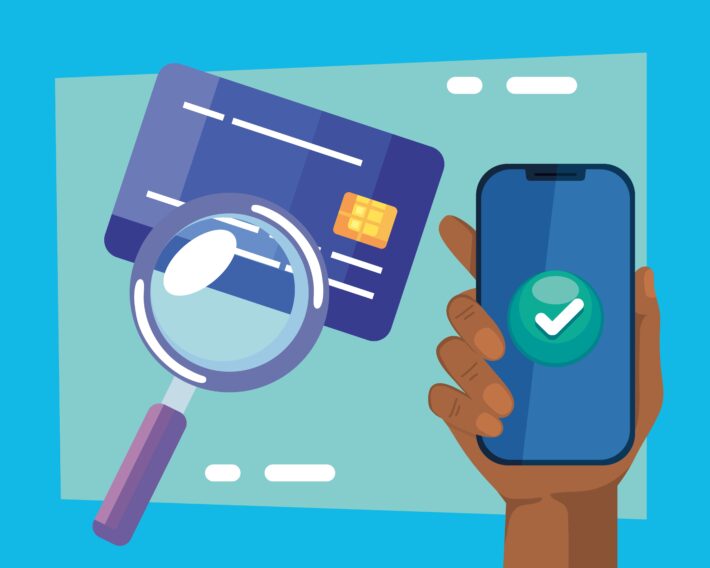Identity Verification Strengthening Authentication Methods

In an increasingly digital world, identity verification has become a critical component of security for both individuals and businesses. This discussion will explore the significance of identity verification, ID strengthening authentication methods, highlighting its essential role in protecting personal information and the potential risks associated with inadequate verification methods.
Various types of identity verification will be examined, along with their benefits and actionable insights for businesses seeking to enhance their authentication processes.
Furthermore, emerging trends that are poised to shape the future of identity verification will be addressed. This analysis aims to uncover the vital elements of robust identity verification and its importance in today’s interconnected landscape.
What Is Identity Verification?
Identity verification is a critical process that confirms individuals’ identities, serving as a fundamental basis for various authentication methods in today’s increasingly digital environment.
This process typically incorporates security protocols and techniques, including biometric authentication and two-factor authentication, which together establish a comprehensive framework for user verification.
As cyber threats continue to evolve, the implementation of effective identity verification solutions is essential for safeguarding digital identities and mitigating the risk of identity theft.
Why Is Identity Verification Important?
The significance of identity verification is paramount, as it plays a critical role in preventing fraud and identity theft while protecting user data in an environment increasingly threatened by online security risks.
Robust identity verification processes, such as Know Your Customer (KYC) procedures and real-time verification, are essential for businesses aiming to establish trust with their users, comply with privacy regulations, and mitigate the risk of data breaches.
Furthermore, the implementation of effective identity assurance frameworks can significantly enhance overall security measures and improve the user experience.
What Are the Risks of Not Having Strong Identity Verification?
The risks associated with inadequate identity verification processes are considerable, encompassing heightened vulnerability to identity theft, financial fraud, and data breaches that can compromise sensitive user information. Organizations that lack robust identity verification solutions may encounter increased liabilities, regulatory penalties, and a decline in user trust and engagement.
Insufficient security measures can expose businesses to cybersecurity threats that jeopardize their operations and overall reputation.
In this context, the implications of non-compliance with privacy regulations represent a significant concern for organizations. The failure to implement adequate identity verification systems can result not only in financial losses but also in substantial legal consequences.
Customers, increasingly aware of their rights, may seek out more secure alternatives, leading to a potential loss of business to competitors that prioritize effective identity verification processes. Following a breach, businesses may face high remediation costs and must address the ongoing necessity for enhanced cybersecurity measures to protect their interests.
Ultimately, the stability and growth of any organization depend on its commitment to safeguarding user identities.
What Are the Different Types of Identity Verification?
There are numerous identity verification methods currently available, each tailored to address specific security needs and compliance requirements. These methods include knowledge-based verification, biometric verification, and document verification.
Each authentication approach utilizes various technologies such as facial recognition, fingerprint scanning, and KYC (Know Your Customer) processes to ensure precise validation of user identities. Given the increasing prevalence of digital interactions, selecting the appropriate verification method is essential for enhancing both security and user experience.
1. Knowledge-based Verification
Knowledge-based verification is a traditional authentication method in which users provide answers to security questions or other personal information to confirm their identity. This method operates on the principle that only the legitimate user will possess the knowledge required to answer these inquiries, thereby facilitating identity validation and access control.
However, the effectiveness of this approach may be compromised by several factors, including the possibility of users forgetting their answers or the risk of such information being publicly accessible through social media platforms. While knowledge-based verification can enhance security protocols by introducing an additional layer of user verification, it is important to acknowledge its limitations, particularly in situations where users may find it challenging to recall specific details.
The role of this verification method within the context of broader identity management systems is crucial; it must function in conjunction with multi-factor authentication methods to ensure a comprehensive security strategy that effectively balances user convenience with robust identity protection.
2. Biometric Verification
Biometric verification employs unique physical characteristics, such as fingerprints or facial features, to authenticate an individual’s identity, thereby providing a high level of security and accuracy. This method, which falls within the broader domain of identity assurance, has gained substantial traction due to technological advancements and the increasing demand for secure authentication processes.
Fingerprint scanning and facial recognition are two of the most prominent forms of biometric verification. These technologies not only enhance security frameworks by offering robust authentication measures but also improve user experience by facilitating streamlined access.
Users generally exhibit a higher level of acceptance for these methods as they eliminate the necessity for complex passwords, rendering interactions faster and more convenient. However, concerns regarding privacy, data storage, and potential misuse persist.
Addressing these issues is essential for fostering trust and ensuring the widespread adoption of biometric systems in both personal and professional contexts.
3. Physical Documents Verification
Physical document verification entails the systematic assessment of government-issued identification or other official documentation to confirm an individual’s identity, which is a crucial aspect of the Know Your Customer (KYC) processes. This method ensures that the identification presented aligns with the information provided during user onboarding, thereby enhancing the integrity of identity proofing.
In today’s increasingly regulated landscape, the document verification process transcends mere administrative function; it constitutes a critical element of regulatory compliance that enables institutions to mitigate risks associated with identity fraud. By conducting thorough document verification, organizations can more effectively evaluate potential risks and ensure that user consent is obtained transparently, thus creating a more secure customer onboarding experience.
This process serves to complement other methods, such as biometric checks and digital authentication, by establishing multiple layers of security. Collectively, these strategies not only fulfill legal obligations but also foster trust with customers, thereby cultivating a secure relationship that is essential for long-term engagement.
4. Two-Factor Authentication
Two-factor authentication (2FA) is a security mechanism that necessitates users to provide two distinct forms of identification prior to accessing their accounts, thereby significantly enhancing the security of online transactions. This method typically combines something the user knows, such as a password, with something they possess, like a security token or a mobile verification code, resulting in a comprehensive multi-factor authentication process.
By implementing 2FA, organizations can enhance their identity verification solutions and substantially diminish the risk of unauthorized access. This dual-layered approach serves as a critical safeguard against identity theft, ensuring that even if a password is compromised, an additional barrier exists to prevent unauthorized entry.
The integration of user authentication metrics enables businesses to effectively analyze secure login processes, thereby improving their capacity to mitigate risks associated with data breaches. As cyber threats continue to evolve, the adoption of technologies such as two-factor authentication becomes essential for maintaining the integrity and confidentiality of sensitive information.
What Are the Benefits of Strong Identity Verification?
Implementing robust identity verification measures provides numerous advantages, including enhanced fraud prevention, improved user experience, and adherence to regulations governing data privacy and security.
By establishing a comprehensive identity management framework, organizations can foster user trust and effectively mitigate the risks associated with identity fraud and data breaches.
1. Prevents Fraud and Identity Theft
One of the primary advantages of effective identity verification is its capacity to prevent fraud and identity theft, thereby enabling organizations to secure user data and maintain trust. By implementing robust security protocols, businesses can significantly reduce the risk of unauthorized access and safeguard their digital assets.
This proactive approach not only protects sensitive information but also enhances overall cybersecurity measures. A well-documented case study of a major financial institution illustrates that the adoption of advanced biometric authentication led to a nearly 30% reduction in fraudulent activity.
Furthermore, periodic identity verification checks strengthen defenses by ensuring that user credentials remain current and unaltered. These strategies not only deter potential cybercriminals but also cultivate a sense of safety among customers, thereby reinforcing their confidence in the organization’s commitment to protecting their personal information.
2. Enhances User Experience
A robust identity verification process can significantly enhance the user experience by streamlining the onboarding procedure and ensuring secure transactions. Efficient identity verification solutions can reduce friction, enabling users to navigate services seamlessly while maintaining confidence in the security of their personal information.
For example, numerous fintech companies have implemented automated verification technologies that allow users to verify their identities in real-time, eliminating the lengthy waiting periods often associated with traditional methods. This approach not only accelerates user engagement but also fosters trust, as individuals feel more secure knowing their data is protected by comprehensive identity assurance measures.
Leading e-commerce platforms that incorporate secure user interfaces for identity verification report higher customer satisfaction rates, as consumers appreciate swift, hassle-free processes that prioritize their safety.
By prioritizing these advanced verification techniques, businesses can create a seamless user journey that fosters loyalty and enhances overall satisfaction.
3. Meets Compliance Requirements
Meeting compliance requirements represents a significant advantage of robust identity verification, as numerous industries are governed by stringent regulations concerning data privacy and user security. By implementing effective identity verification measures, organizations can align with compliance standards and mitigate potential legal risks.
Ensuring adherence to various regulations, such as the General Data Protection Regulation (GDPR) and the Health Insurance Portability and Accountability Act (HIPAA), serves as a critical foundation for effective identity governance.
Organizations are also required to conduct comprehensive risk assessments to identify vulnerabilities within their systems, which enables the implementation of necessary controls to safeguard sensitive information.
A well-structured identity verification process not only enhances compliance but also fosters trust with clients and customers, demonstrating the organization’s commitment to privacy and security in all transactions.
As the regulatory landscape continues to evolve, maintaining compliance will be essential for protecting both business integrity and user data.
How Can Businesses Implement Strong Identity Verification?
Organizations can establish robust identity verification protocols by adopting a multi-faceted approach that incorporates various authentication methods and consistently updates security measures to remain proactive against evolving threats.
By integrating automated verification processes and actively engaging users during the onboarding phase, businesses can enhance both security and the overall user experience.
1. Use Multiple Verification Methods
The utilization of multiple verification methods is essential for establishing robust identity verification, as it enhances security through redundancy and diminishes the likelihood of unauthorized access. By integrating knowledge-based, biometric, and document verification techniques, organizations can develop a comprehensive identity verification solution that effectively mitigates risk.
This multi-layered approach not only fortifies security protocols but also optimizes user experience alongside stringent authentication metrics. For example, while biometric scans offer a high degree of trustworthiness, the incorporation of knowledge-based answers ensures that only authorized users are granted access, even in the event of a token compromise.
Security tokens further enhance this system by serving as unique identifiers that authenticate user credentials across various platforms. Collectively, these layers not only deter potential breaches but also foster greater confidence in each transaction, underscoring the critical importance of robust identity verification in today’s digital landscape.
2. Regularly Update Security Measures
Regularly updating security measures is paramount for maintaining effective identity verification practices, particularly given the evolving nature of cyber threats. Organizations must implement data encryption, conduct vulnerability assessments, and adopt the latest security protocols to safeguard sensitive user information.
This proactive approach not only aids in the early detection of potential threats but also strengthens network security by establishing a perimeter that incorporates zero trust architecture. Regular updates should encompass patches for software vulnerabilities and enhancements to monitoring tools, thereby ensuring that all access points are rigorously scrutinized and authorized.
Conducting regular risk assessments enables organizations to identify gaps in their security posture and refine their strategies accordingly. Cultivating a culture of continuous improvement within the security framework ensures that teams are adequately prepared to address emerging threats effectively.
3. Educate Employees and Customers
Educating both employees and customers on the significance of identity verification can greatly enhance security practices and promote a culture of awareness. By informing users about identity management techniques and advocating for user consent during verification processes, organizations can foster trust and resilience against identity fraud.
This education is particularly crucial in today’s digital landscape, where threats such as identity theft have become increasingly sophisticated. Implementing training and awareness programs that address behavioral biometrics can give the power to users to identify suspicious activities and comprehend the mechanisms underlying identity validation.
Additionally, organizations can explore privacy-focused solutions that bolster security while protecting personal information, thereby cultivating a more informed user base. As customers gain a deeper understanding of identity verification, they will be better equipped to actively participate in securing their data and safeguarding their privacy, ultimately contributing to a more secure environment for all stakeholders involved.
What Are the Future Trends in Identity Verification?
As technology advances, several future trends are emerging in the field of identity verification, particularly the application of artificial intelligence and blockchain technology to develop secure and decentralized identity solutions.
These innovations are expected to improve both the efficiency and accuracy of verification processes while incorporating biometric data for seamless authentication.
1. Use of Artificial Intelligence
The integration of artificial intelligence into identity verification systems is transforming how organizations authenticate users, utilizing machine learning algorithms to enhance both accuracy and efficiency. AI possesses the capability to analyze patterns in user behavior, allowing for improved risk assessment and identity validation processes.
This technological advancement not only automates routine tasks but also strengthens the overall security framework by identifying potential anomalies that traditional methods may overlook. By incorporating AI, businesses can establish robust identity assurance frameworks that significantly enhance their trustworthiness with customers, thereby ensuring a more secure and seamless user experience.
The automated nature of these systems give the power tos organizations to respond promptly to emerging threats, alleviating the burden on human resources while simultaneously increasing operational efficiency. As AI continues to advance, its role in strengthening identity verification processes will undoubtedly become even more essential.
2. Blockchain Technology for Secure Verification
Blockchain technology is revolutionizing secure identity verification by offering a decentralized and tamper-proof approach to storing and sharing identity information. This innovation significantly enhances data privacy and give the power tos users with greater control over their personal information while facilitating real-time verification processes.
By utilizing trusted identity networks, users can share only the essential information required without disclosing their entire identity, thereby minimizing the risk of data breaches. Cryptographic techniques play a crucial role in ensuring that identity information remains secure during transmission and storage, effectively protecting individuals from potential fraud.
These advancements position blockchain as an essential component in identity governance, enabling organizations to verify identities efficiently while adhering to privacy regulations. Consequently, both individuals and institutions can experience an elevated level of trust in identity verification, which fosters safer online interactions and streamlines processes across various sectors.
3. Biometric Data Integration for Seamless Authentication
The integration of biometric data into identity verification systems is increasingly crucial for delivering seamless authentication experiences, as users demand faster and more efficient verification methods. By combining traditional authentication techniques with biometric data, organizations can enhance identity assurance and minimize friction in the user experience.
This development not only improves user convenience but also significantly strengthens security measures against identity theft and fraud. The application of biometric markers, such as fingerprints and facial recognition, offers a level of accuracy that traditional methods cannot achieve. As a result, organizations that adopt this technology are better positioned to protect user data and maintain the integrity of digital identities.
Streamlined identity proofing processes cultivate a more trusted relationship between users and service providers, as the focus shifts towards implementing appropriate data protection practices that align with users’ expectations in today’s digital landscape.
Frequently Asked Questions
1. What is identity verification and why is it important?
Identity verification is the process of confirming a person’s identity to ensure that they are who they claim to be. It is important to prevent fraud and protect sensitive information, such as personal data and financial accounts.
2. How does identity verification strengthen authentication methods?
Identity verification adds an extra layer of security to the authentication process. By confirming a user’s identity, it makes it harder for unauthorized individuals to gain access to personal accounts or information.
3. What are some common methods used for identity verification?
Some common methods for identity verification include government-issued ID cards, biometric verification (such as fingerprint or facial recognition), and knowledge-based verification (answering security questions about personal information).
4. How can businesses benefit from implementing stronger identity verification measures?
Businesses can benefit from implementing stronger identity verification measures by reducing the risk of fraud and data breaches. This helps build trust with customers and protects their personal information, ultimately leading to improved customer satisfaction and retention.
5. Are there any potential challenges or drawbacks to using identity verification?
One potential challenge of identity verification is balancing security with user experience. Some methods, such as biometric verification, may be more inconvenient for users, while less secure methods may be easier to use. Additionally, there may be concerns about privacy and the collection of personal data.
6. Can identity verification be used for both online and in-person transactions?
Yes, you can use identity verification for both online and in-person transactions. In-person transactions may require a government-issued ID, while online transactions can utilize various methods such as knowledge-based verification or biometric authentication.



